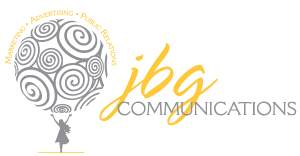By Janice B. Gonzalez
There is a saying, “If you fail to plan, then plan to fail”. This is certainly true in the business world. While most people “think” they have a plan, it isn’t really a plan unless it is in writing, is specific, and has a plan of action. Having someone to do this for you is ideal, but for those of you who don’t have a marketing person, here are some tips to help you develop your own starter plan:
The first step to creating a plan or strategy is to identify your S.W.O.T. — Strengths, Weaknesses, Opportunities, Threats. Look at yourself, your profession, your area and look for S.W.O.T. This will help you identify what you are good at, what you are not good at, the opportunities that you can take advantage of and the threats that you need to be aware of. Your S.W.O.T. will help you do the following:
1) Set S.M.A.R.T. Goals—Specific, Measurable, Attainable, Realistic, Timed.
Be specific —what is it that you want to accomplish. If you want to increase the number of clients you get a year, specify how many, what type of clients (demographics).
Set a deadline – by when do you want to achieve your goal.
Be realistic and make sure that it is attainable.
2) Identify the obstacles that you will need to overcome. Is there something keeping you from attaining your goal? It could be time, distance, capital, just about anything. List them and develop a plan to overcome them.
3) Identify the people, groups & organizations that you will need to involve or be involved with in order to reach your goal.
4) Identify the skills, if any, that are required?
5) Write your plan of action? How are you going to reach your goal.
6) Set Short Term & Long Term goals. By when will you complete your goal.
7) Identify the benefits of achieving your goal. What’s in it for you.
8) Make a commitment to your action plan.
Example: You are an Accountant. After doing your S.W.O.T. analysis, you determine that you are really good at International Taxation. (Strength) You have low overhead costs and can offer competitive fees (Strength) You are not board certified (Weakness), which would help you gain more recognition, credibility and opportunity. Your office is located in Homestead, which is not convenient for most clients and is away from the center of business (Weakness), You are one of only a handful of accountants that speaks Spanish, English, Portuguese, Creole, French, German and Italian (Strength), helping you create a niche in the International community (Opportunity). There is a proposed change in International Taxation laws which may affect the market negatively (Threat).
Goal: To be recognized as the premiere International Taxation Accountant among the International community. Increase my client base by 50% and sit for the CPA exam in the first 6 months. Expand my company to include 4 Associates – 2 for International Taxation and 2 that handle general accounting matters. Move offices to downtown Coral Gables and eventually buy my own building. Retire in 20 years with enough income to maintain my current standard of living.
Obstacles: Not enough of a client base. Not well established in the accounting community. Limited funds for marketing. Would like to charge more on an hourly basis, but don’t have the experience or credentials of those in the same hourly bracket. Need to sit for CPA exam but haven’t had enough time to prepare. Not enough capital to invest in associates or relocation. Not making enough money to pay bills and invest.
People & Organizations: Local and National Accounting Associations, International Business organizations (banking, accounting, chambers of commerce) Local Chamber of Commerce, committees relating to international business, Legal organizations that deal with international clients, Latin Trade organizations, Consulates for various countries. Realtors that handle transactions for overseas clients.
Special Skills: Certifications— CPA.
Plan of Action/Time frame Immediately: Join the local and national accounting associations as well as the Chamber of Commerce. Get on a committee that involves international affairs. Attend at least one networking event per week and hand out business cards. Send a letter to my friends, family and acquaintances letting them know about my new focus in accounting. Request referrals. Begin studying for CPA exam on weekends. In Three Months Write an article on international taxation law and get it published in one of the business publications. Develop a seminar on international taxation and promote it to others with an international client base. Contact local organizations and get on their speakers bureau. Write and send releases to all media concerning appointments and accomplishments. Create a web site. List my credentials on it. Include the address on my cards. Post important International taxation information on my site. In 6 months— add 10 new clients. Start a newsletter for clients. Take CPA exam. 12 months— Add 10 more clients. Move offices to downtown. Hire new associate and administrative assistant. Increase my rate. 3 years: add 10 more clients, add another associate and assistant. Increase my rate. 5 Years: Increase my rate. Buy building, add 2 more associates and assistants. 20 years: Sell my practice for a sizable income. Sell building or lease it out. Use profits to retire, travel, play golf, relax, and have fun.
Benefit/Reward: By dedicating time and effort to networking, writing, speaking and joining organizations, I will eventually reach my goal of creating a niche, notoriety, increased business and income for myself, my firm, and my family. I will be able to retire at a relatively early age and enjoy time with my family.
Commitment: I am fully committed to accomplishing this goal and will do whatever it takes. I will share my goals with my family and individuals that will be affected by my pursuits. I will do this to gain their support and keep my commitments. I will persist until I succeed.
Copyright 2022 © JBG Communications
